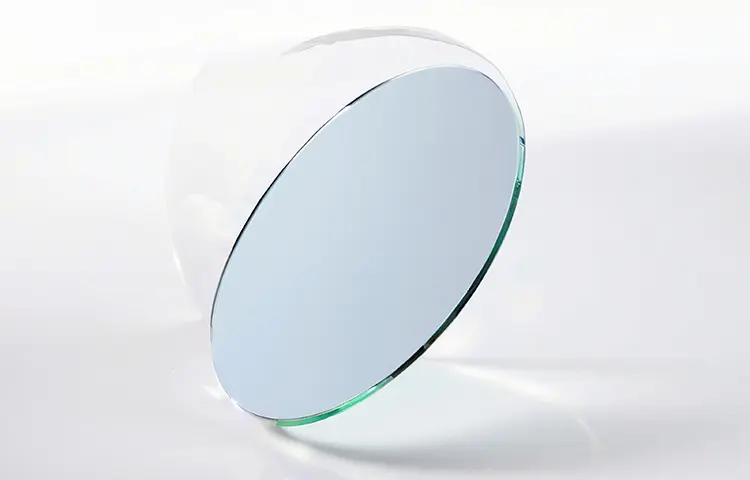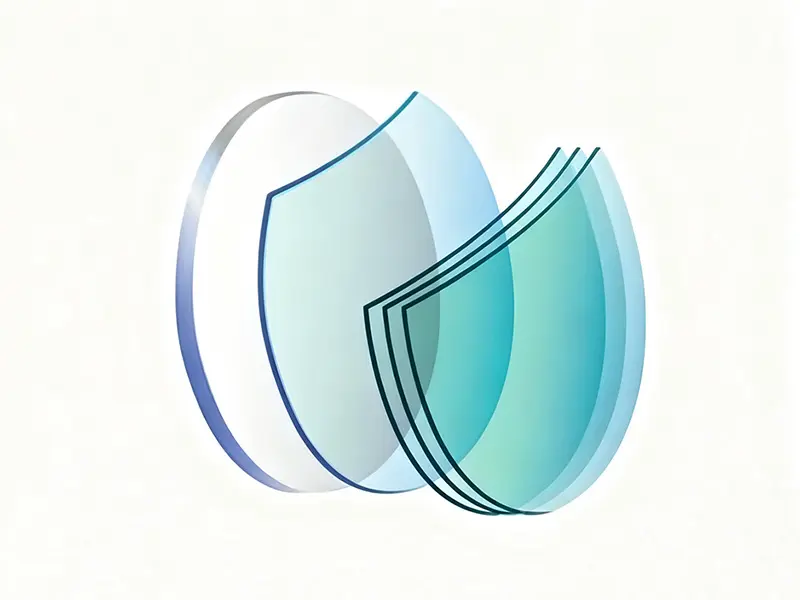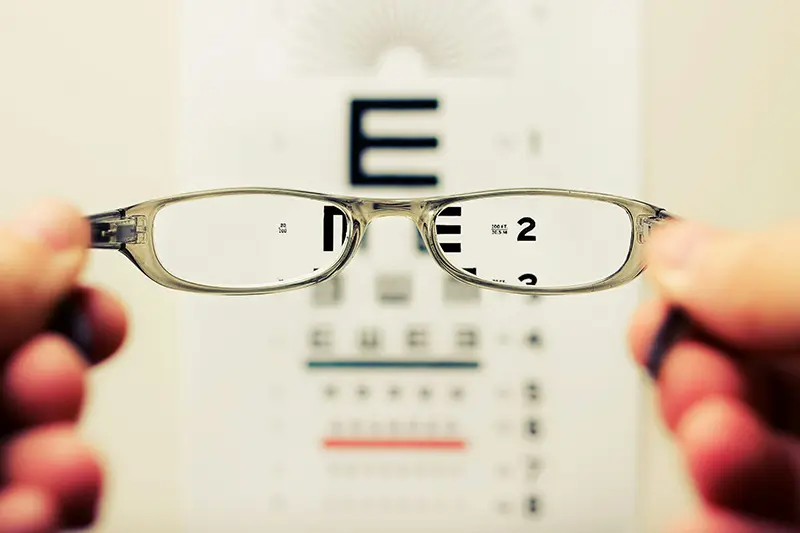Why are PC lenses more highly recommended for multifocal defocus glasses?
There are two common materials for multifocal defocus lenses on the market: polycarbonate (PC) and resin. Have you ever wondered which material is the better choice? In this article, we will analyze various aspects in depth to explain why we recommend PC lenses.
1. Comparison of traditional resin lenses and polycarbonate lenses
Traditional resin lenses are made from a mixture of various polymer compounds. This material has good light transmission and is known for being lightweight and easy to process. Compared to glass lenses, resin lenses are much lighter, which reduces the burden on the nose and ears, thereby improving wearing comfort.
Polycarbonate lenses are made from a thermoplastic material, which is molded by heating. Polycarbonate, commonly known as bulletproof glass, endows PC lenses with outstanding impact resistance (10 times that of resin lenses and 60 times that of glass lenses). In addition, their high refractive index and low specific gravity make the lenses significantly lighter. At the same time, PC lenses have more advantages:
• The material naturally blocks UV rays, so they don't require an additional coating for UV protection.
• They won't yellow within 3-5 years.
• They have good thermoplastic and electrical insulating properties.

2. PC lenses offer superior safety
Multifocal defocus lenses are mainly used for myopia prevention and control in children and teenagers. This age group is very active and prone to bumps and falls, which can easily damage their eyeglasses.
Imagine a child wearing resin lenses who gets hit while playing ball or running. The lenses might crack, and the fragments could potentially cause eye injuries. PC lenses, on the other hand, might get a scratch at most, but will not be broken. Safety standards for children's lenses are strict in many countries. PC lenses can pass the " Drop Ball Impact Test ", while resin lenses often fail.

3. PC lenses provide a better defocus effect
The surface of a multifocal defocus lens contains hundreds of tiny "microlenses" (used to control myopia progression). The curvature error of these microlenses must be less than 0.01 mm, which is finer than a human hair.
PC lenses are formed by high-pressure injection molding, a process that accurately reproduces the design of the mold. Clear and precise microlenses can be obtained on the lens surface, which ensures a stable defocus effect.
Resin lenses, however, are manufactured through cast molding (either thermal curing or photo-curing, or a combination of both). Due to the lack of pressure, the microlenses formed will not be uniform enough, leading to an unstable defocus effect.
4. PC lenses are thin and light, so children won't resist wearing them.
Because of the microlenses, multifocal defocus lenses have slightly thicker edges than normal lenses. The refractive index of PC lenses is higher than that of normal resin lenses (1.59 vs. 1.50), which means that PC lenses can be made thinner for the same prescription of eyeglasses. For example, for a child with 600-degree myopia, the edge of a PC lens is about 6.5 mm thick, while a resin lens is 8 mm thick, which will cause more pain when pressing on the nose. Children are inherently not fond of wearing glasses, and if the glasses are too heavy, they are more likely to take them off, which affects the effectiveness of myopia prevention and control.

5. Comparison of optical properties
Resin has good light transmittance, and is able to present a more real and clear visual effect. Although the light transmittance of PC lenses is slightly inferior to that of resin lenses, their color dispersion is smaller, which has less impact on visual quality. In addition, the smooth surface of PC lenses can reduce internal scattering and further protect eye health.
6. Solutions to poor abrasion resistance and high internal stress of PC lenses
Poor abrasion resistance has always been considered as a drawback of PC lenses, but this can be improved by applying a special coating to enhance the surface hardness.
• Hard Coating: This is the most crucial solution. Coating a layer of hard film, such as silicon dioxide (SiO₂) or organosilicon compounds on the lens surface can significantly improve the surface hardness (from the original 2-3H to 4-5H) and reduce scratches caused by daily friction. Most PC lenses now come with this treatment from the factory, so when you're choosing the lenses, priority can be given to products marked with "hard coating."
• Multi-coatings: Some high-end lenses adopt a combination of “hard coating and anti-smudge coating”. This adds an oleophobic and hydrophobic layer on top of the hard coating, which reduces fingerprints and dust adhesion. This indirectly lowers the frequency and force needed for cleaning.
Another concern people have is that PC lenses have higher internal stress than resin lenses. However, in the production process, manufacturers will reduce internal stress through various methods, such as using lower injection pressure, an appropriate holding time, reducing the temperature difference during cooling, and annealing treatment.
Although PC lenses are more expensive than ordinary resin lenses due to the material cost, complexity of grinding and processing, and molding technology, they are undoubtedly a better choice when considering their impact resistance and safety, especially in situations where high-strength protection is needed.








